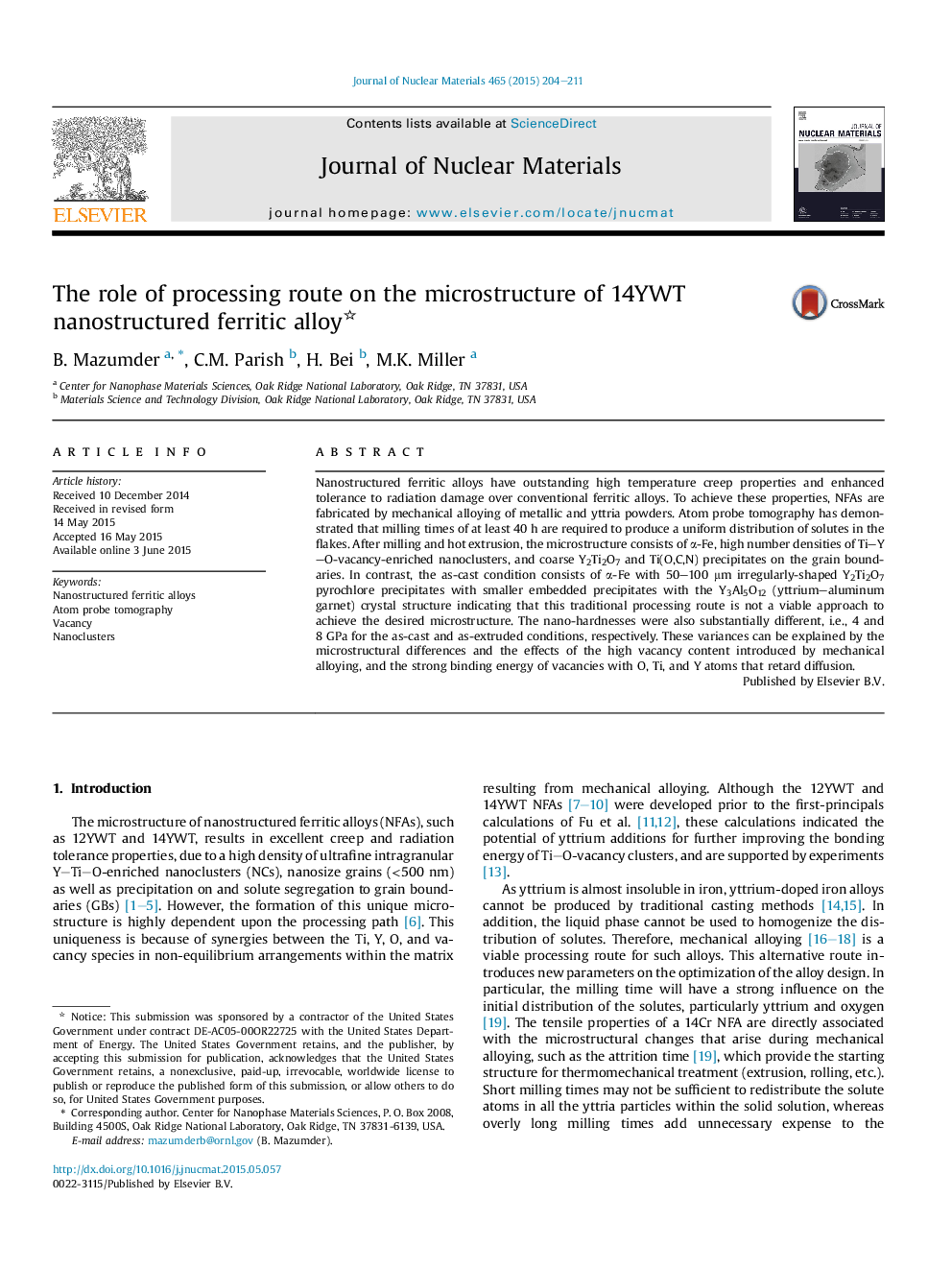| Article ID | Journal | Published Year | Pages | File Type |
|---|---|---|---|---|
| 7965207 | Journal of Nuclear Materials | 2015 | 8 Pages |
Abstract
Nanostructured ferritic alloys have outstanding high temperature creep properties and enhanced tolerance to radiation damage over conventional ferritic alloys. To achieve these properties, NFAs are fabricated by mechanical alloying of metallic and yttria powders. Atom probe tomography has demonstrated that milling times of at least 40 h are required to produce a uniform distribution of solutes in the flakes. After milling and hot extrusion, the microstructure consists of α-Fe, high number densities of Ti-Y-O-vacancy-enriched nanoclusters, and coarse Y2Ti2O7 and Ti(O,C,N) precipitates on the grain boundaries. In contrast, the as-cast condition consists of α-Fe with 50-100 μm irregularly-shaped Y2Ti2O7 pyrochlore precipitates with smaller embedded precipitates with the Y3Al5O12 (yttrium-aluminum garnet) crystal structure indicating that this traditional processing route is not a viable approach to achieve the desired microstructure. The nano-hardnesses were also substantially different, i.e., 4 and 8 GPa for the as-cast and as-extruded conditions, respectively. These variances can be explained by the microstructural differences and the effects of the high vacancy content introduced by mechanical alloying, and the strong binding energy of vacancies with O, Ti, and Y atoms that retard diffusion.
Related Topics
Physical Sciences and Engineering
Energy
Nuclear Energy and Engineering
Authors
B. Mazumder, C.M. Parish, H. Bei, M.K. Miller,
